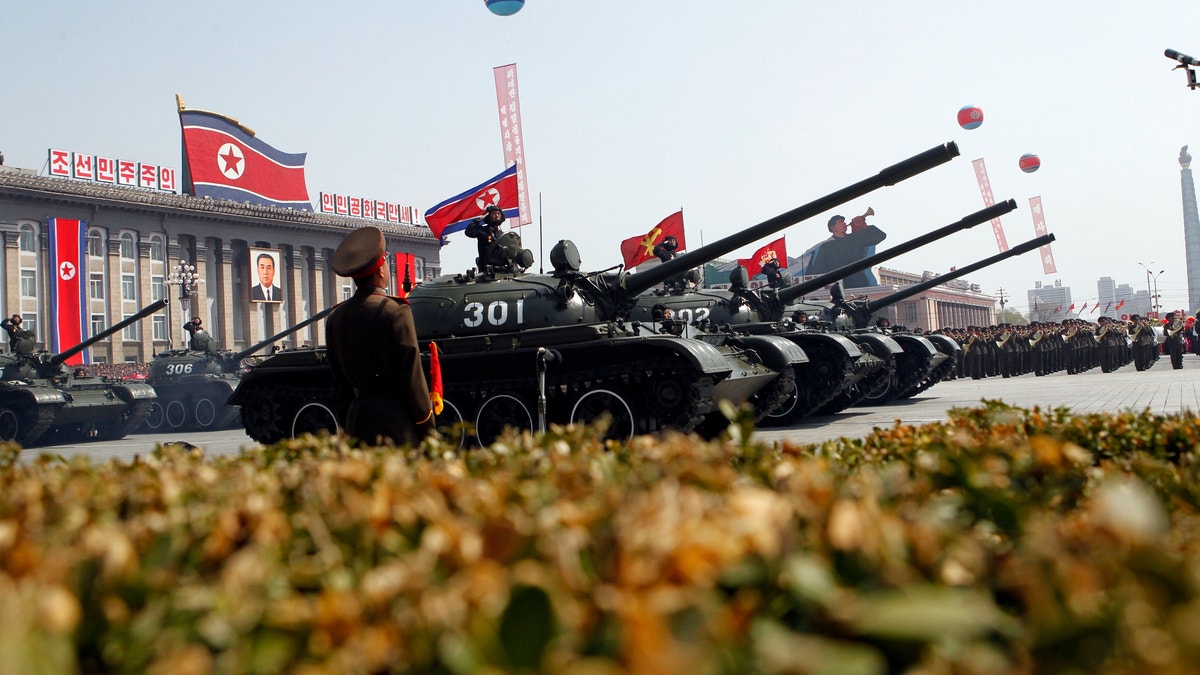
April 15: 2012: North Korean tanks take part in a mass military parade in Pyongyang's Kim Il Sung Square to celebrate 100 years since the birth of North Korea's founder Kim Il Sung. (AP)
PYONGYANG, North Korea – North Korea on Sunday unveiled what appeared to be a new missile at a military parade in Pyongyang.
The missile, displayed during celebrations for the centennial of the birth of late North Korea founder Kim Il Sung, appears to add to an arsenal that has raised international worries heightened by the country's simultaneous development of nuclear weapons.
The celebrations come two days after North Korea fired a rocket widely viewed abroad as a provocative test of missile technology. The rocket failed about a minute after liftoff.
Military analysts in Japan and South Korea said the missile on display Sunday appeared to be something newer -- and possibly bigger -- than what had previously been displayed.
But they said further examination would be required to tell whether it was an intercontinental ballistic missile, or ICBM, that North Korea has reportedly had in the works for quite some time.
A number of North Koreans at the parade said it was the first time they had seen the new missile. The exact design could not immediately be confirmed by military officials.
"It looked like more than a mock-up, and like it could be intended as an ICBM, but it is very hard to tell at this point," said Isaku Okabe, a private Japanese military specialist.
Sohn Young-hwan, a South Korean rocket scientist who heads the privately funded Institute of Technology and Management Analysis in Seoul, said the missile was possibly an intermediate-range ballistic missile, but not an ICBM.
Analysts have speculated for months that North Korea is working on a rocket that is bigger and stronger than the Unha-3 that failed Friday.
The new missile it is supposedly working on is rumored to have bigger boosters that give it a maximum range of more than 6,200 miles. That would theoretically make it capable of reaching the continental U.S., though as Friday's failure demonstrated, North Korea has a long way to go before it can mount an effective ICBM attack.
Nick Hansen, of the Center for International Security and Cooperation at Stanford University, wrote on the website 38 North that satellite imagery and photos taken by journalists allowed to visit North Korea's new launch site back up the claim that the North has a bigger missile in mind because the gantry used on Friday is much bigger than it needed to be for the Unha-3 rocket.
North Korea has used military parades to reveal its missiles before.
A parade in 2010 provided the world with its first look at a road-mobile ballistic missile with a range estimated at 1,860-2,485 miles. Such missiles are of particular concern because they are harder to locate and destroy than missiles that are launched from fixed locations, like the one Friday.
The 4,000-kilometer range would put U.S. bases in Guam, South Korea and Japan within its sights.
